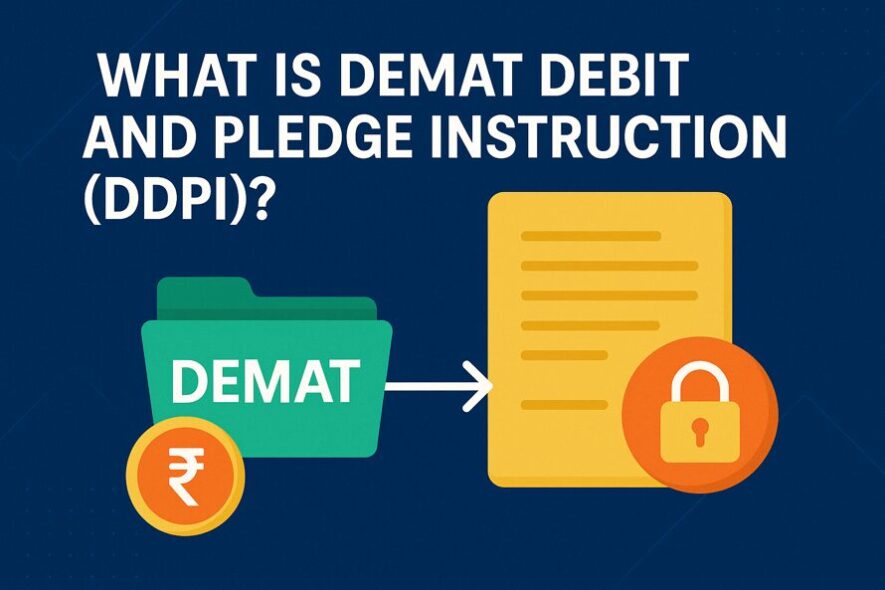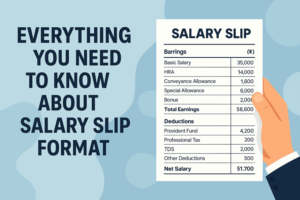
Introduction to DDPI in Stock Market Operations
If you trade in shares, you know that every stock you buy or sell moves through your demat account. Earlier, brokers used something called a Power of Attorney (POA) to carry out transactions on your behalf. While it worked, it had loopholes and chances of misuse. To solve this, the Securities and Exchange Board of India (SEBI) introduced a safer, transparent system known as Demat Debit and Pledge Instruction (DDPI).
DDPI is now the standard authorization method across brokers in India. Simply put, it allows brokers to debit securities from your demat account or pledge them for margin purposes — but only within a well-defined scope. This reduces risks, gives you control, and ensures trades happen smoothly without unnecessary paperwork.
Why did SEBI introduce DDPI?
For years, POA raised concerns among investors. Many brokers misused POA powers by selling shares without client permission or mismanaging client securities. Complaints piled up, and SEBI took notice.
The regulator wanted a mechanism that:
- Limited broker powers to the actions needed for trading.
- Prevented misuse of investor assets.
- Maintained smooth operations for buying, selling, and pledging securities.
That’s how DDPI came into existence. SEBI’s circular dated July 2022 officially rolled it out, making it a replacement for POA from September 1, 2022. Since then, every new demat account has had to follow the DDPI system.
Understanding the Concept of DDPI
How DDPI Replaces POA (Power of Attorney)
For years, brokers relied on the Power of Attorney (POA) model to execute trades. Once you signed a POA, the broker had sweeping authority—they could debit shares, transfer them to clearing houses, pledge them for margin, and in some cases even move them to their own pool accounts. While the intent was to simplify operations, the wide powers created a real risk of misuse. Cases of unauthorized share transfers and investor complaints kept surfacing, and SEBI had to step in.
The Demat Debit and Pledge Instruction (DDPI) was introduced to replace this outdated system. Unlike the blanket control of POA, DDPI is a restricted authorization. It only permits two actions: debiting shares when you sell them on the exchange and pledging securities if you want to use them as collateral for trading margins. Nothing more, nothing less. By limiting broker powers to these specific functions, DDPI ensures your holdings stay safe while still allowing smooth settlement and margin funding. Think of it as a safety filter—it enables essential transactions but blocks everything outside the defined scope.
Scope of DDPI: What It Covers and What It Doesn’t
The scope of DDPI is crystal clear.
What DDPI Covers:
- Automatic debit of shares from your demat account when you place a sell order. This ensures timely settlement with the clearing corporation.
- Pledging of securities if you want to avail margins for F&O or other derivative trades. The shares remain in your demat account with a pledge mark, giving you collateral benefits without actual transfer.
What DDPI Doesn’t Cover:
- Brokers cannot transfer your securities to their own accounts.
- They cannot use your holdings for lending, borrowing, or any unrelated activity.
- They have no access to your linked bank account through DDPI.
This defined boundary makes the system both functional and secure. For instance, if you hold 100 shares of Reliance and decide to sell them, the broker can debit exactly those shares for settlement. But they cannot touch the remaining 200 shares of TCS you may hold in the same account.
Applicability to Retail and Institutional Investors
SEBI made DDPI mandatory for all retail investors opening new demat accounts from September 2022 onwards. For existing investors, brokers encouraged migration from POA to DDPI for added safety. Institutional investors like mutual funds and FIIs already operated under stringent custodial processes, but brokers aligned their practices to match the DDPI framework here as well.
For retail investors, the benefit is huge. Their securities are ring-fenced, which means brokers cannot misuse them even in cases of default. It builds confidence, especially for first-time investors who may hesitate to trust intermediaries with unrestricted powers. In short, DDPI is a clean, transparent, and protective shield that balances smooth trading with strong investor safeguards.
Key Features of DDPI
Authorization for Demat Account Debits
When you sell shares, the broker needs to transfer them to the clearing corporation for settlement. DDPI authorizes this debit automatically. This means you don’t need to give a manual Delivery Instruction Slip (DIS) every time you sell.
Authorization for Pledging Securities
If you trade in F&O, you may pledge your shares as collateral for margin. DDPI allows brokers to create this pledge on your behalf, while the securities remain in your account under a pledge mark. This avoids the risk of shares leaving your demat account.
Enhanced Security and Transparency
Unlike POA, DDPI is precise and trackable. You know exactly when securities are debited or pledged. Every movement reflects in your demat statement, giving full visibility.
Revocability of DDPI
The best part: DDPI is revocable. If at any time you want to withdraw authorization, you can submit a revocation request to your broker. After revocation, you’ll need to give manual instructions for every debit or pledge.
DDPI vs POA: What’s the Difference?
Legal Control and Safety
POA gave almost blanket authority, while DDPI restricts actions to sell and pledge transactions only. Legally, this means your securities stay under your control with DDPI.
Operational Usage
With POA, brokers could transfer shares even outside exchange settlements. With DDPI, every debit is linked to an exchange transaction or a pledge instruction, ensuring zero misuse.
Regulatory Intent
SEBI wanted to reduce fraud risk and improve investor confidence. DDPI achieves this by cutting down unnecessary broker control and introducing a standardized, safer framework.
How to Submit a DDPI to Your Broker
Offline vs Online Submission Process
You can submit DDPI either physically or digitally. In the offline method, you fill out and sign a DDPI form, attach basic KYC documents, and hand it to your broker. They then update your demat account and inform the depository. This may take a few working days.
The online method is faster. Most brokers now offer Aadhaar-based e-sign options. You log in to your broker’s app or website, complete the form digitally, and verify with OTP. The authorization reflects in your account within a day or two.
Required Documentation
The paperwork is minimal. Typically, you’ll need:
- A filled DDPI form (as per SEBI’s format).
- PAN card copy.
- Aadhaar or another KYC document.
Some brokers may ask for self-attestation or additional proof, but the process is straightforward.
Steps to Revoke or Modify DDPI
Revoking or changing DDPI is just as simple. Submit a revocation form (online or offline) to your broker. The broker forwards the request to NSDL or CDSL. Once processed, DDPI stops, and you’ll have to use manual slips for future sell or pledge orders.
Impact of DDPI on Investors and Brokers
Investor Protection and Misuse Prevention
For investors, DDPI tightened safety. Brokers can only debit securities during a sell order or pledge them when you authorize margin use. Even in the case of broker defaults, your holdings remain safe in your demat account.
Changes in Trading Workflow
For brokers, DDPI added structure. Settlements now flow through exchange systems directly, leaving little room for manual transfers. While brokers had to adjust systems and educate clients, the process has reduced compliance risk. For investors, this change inspires confidence because the scope for misuse is minimal.
SEBI Guidelines Related to DDPI
Circulars and Compliance Dates
SEBI issued the July 20, 2022, circular, mandating DDPI as the replacement for POA. From September 1, 2022, brokers could no longer ask for a POA. All new demat accounts must follow the DDPI system.
DDPI Mandate for New Demat Account Holders
If you opened a demat account after September 2022, you signed a DDPI form instead of a POA. Existing account holders were encouraged to shift as well, though old POAs still work until voluntarily revoked.
Conclusion
The Demat Debit and Pledge Instruction (DDPI) has changed how stock market operations work in India. By limiting broker powers, SEBI has ensured that investors enjoy both ease of trading and security of holdings.
Today, whether you’re selling shares or pledging them for margin, DDPI keeps the process smooth yet controlled. It protects you from misuse, complies with SEBI’s latest rules, and gives you the confidence that your demat account is truly yours.
For new investors, understanding DDPI is as essential as knowing what a demat account is. For seasoned traders, it’s the assurance that your broker can never misuse your assets again.
FAQs:
Q. Is DDPI mandatory for trading?
Yes, SEBI has made DDPI the standard for new demat accounts. Most brokers now use DDPI in place of the old POA, especially for retail investors.
Q. Can I still use POA instead of DDPI?
No. Brokers have phased out POA for new clients. Existing POAs continue for old accounts, but fresh authorizations must follow the DDPI format.
Q. What happens if I don’t submit a DDPI?
Without DDPI, you’ll need to authorize every sell or pledge transaction manually through depository slips. This slows down trading and isn’t practical for active investors.
Q. How is DDPI more secure than POA?
POA gave brokers broad rights over your account. DDPI narrows it down strictly to sell and pledge actions linked to your orders. This prevents misuse and ensures full transparency.
Q. Can I revoke my DDPI anytime?
Yes, you can. Submit a revocation request online or offline through your broker, and once processed, DDPI will no longer apply to your account.
Q. Does DDPI apply to all types of securities?
DDPI covers shares and securities held in your demat account that are sold or pledged. It doesn’t extend to your bank account or unrelated transactions.







